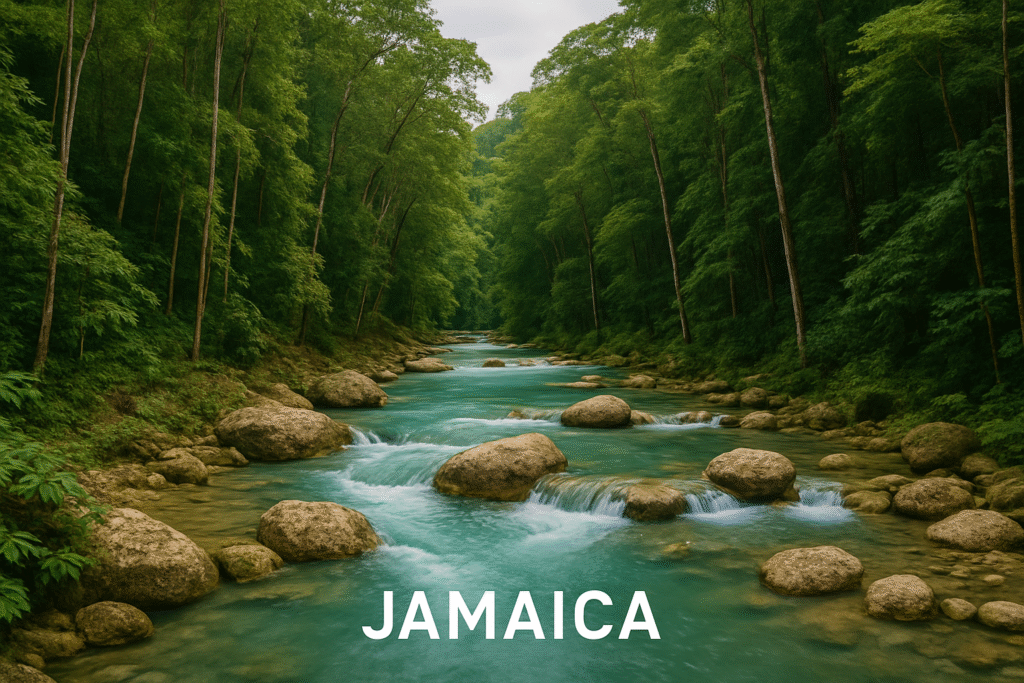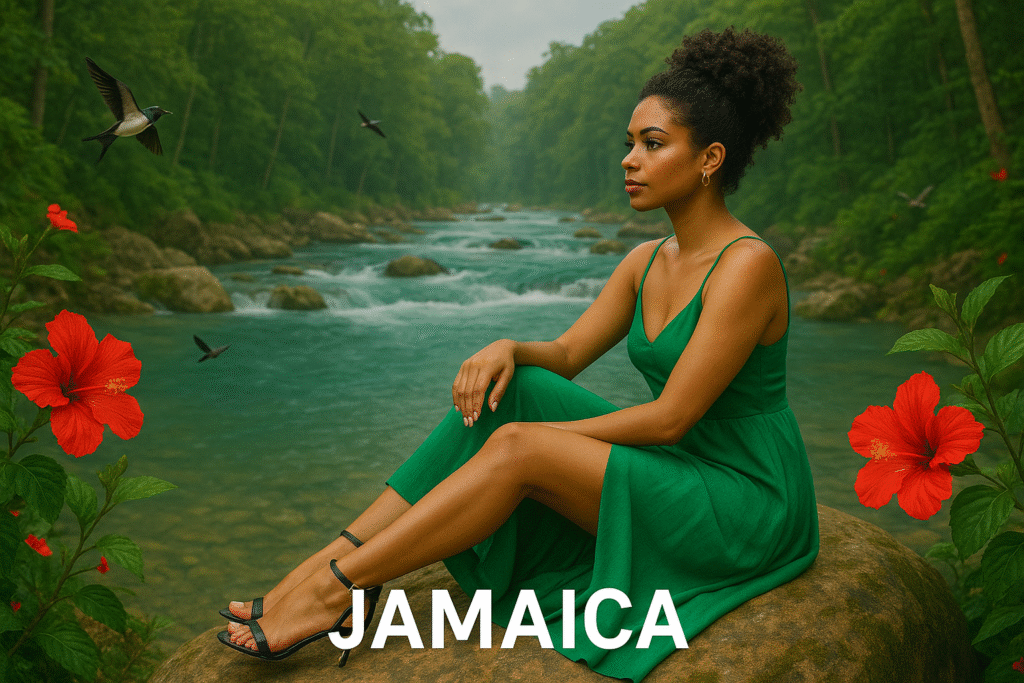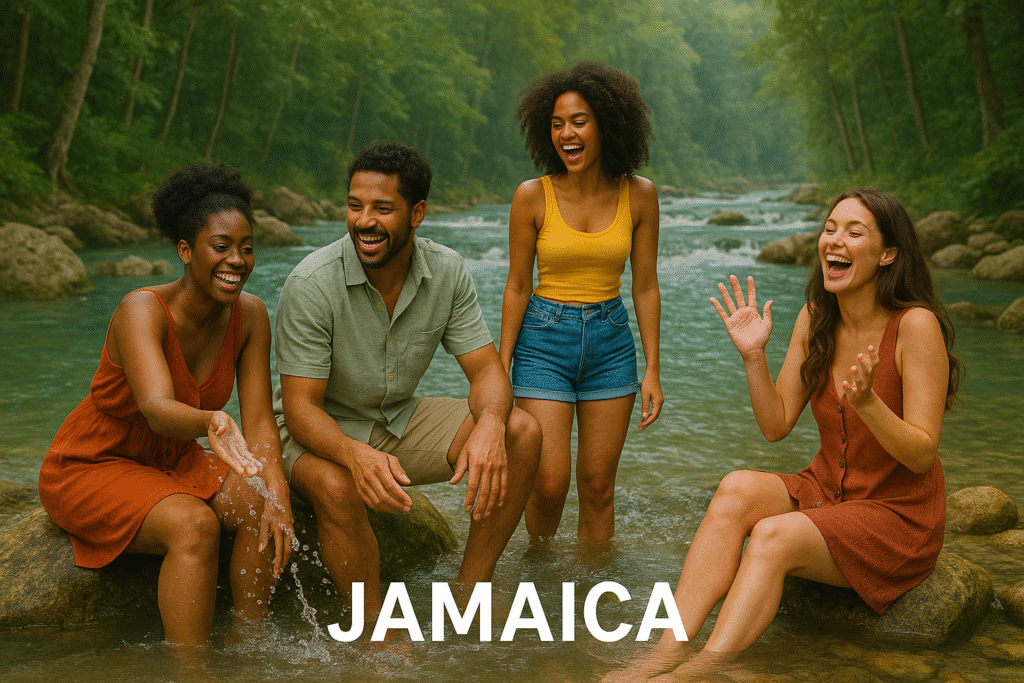
Jamaica, affectionately called Xaymaca by the island’s first inhabitants—the Taino—means “Land of Wood and Water.” Few places in the Caribbean embody this name as powerfully as Jamaica, with over 120 rivers flowing through its valleys, cascading down its mountains, and weaving into the daily lives, heritage, and identity of its people. From the north coast’s rafting havens to the south’s hidden freshwater gems, rivers in Jamaica are not merely natural resources—they are lifelines, witnesses to rebellion, channels of commerce, and gateways to adventure.
Northern Flow: Rivers of the North Coast
The rivers of Jamaica’s north coast are among the most famous and visually stunning. Carving their way from the island’s central highlands down to the Caribbean Sea, these rivers support tourism, farming, and everyday life.
The Martha Brae River, located in Trelawny, is internationally renowned for its bamboo rafting experience, where local guides steer handcrafted rafts down a tree-canopied waterway—a tradition that echoes centuries of river navigation by indigenous people and enslaved Africans.
The Rio Bueno, another popular rafting spot, offers a more adrenaline-pumping experience with its fast-moving waters, ideal for tubing and kayaking.
Dunn’s River, located in St. Ann, is fed by multiple underground springs and is one of the most visited waterfalls in the Caribbean. Visitors climb its terraced limestone rocks as fresh water tumbles over them into the sea.
Other significant north coast rivers include:
- White River, crossing St. Mary and St. Ann, known for tubing and snorkeling.
- Rio Nuevo, site of a historic 1658 battle between the Spanish and British.
- Oracabessa and Port Maria Rivers, lined with lush vegetation and colonial echoes.
- Buff Bay, Wag Water, and Annotto Rivers, rising from the Blue Mountains and cascading through valleys that once hid Maroons and sustained plantations.

Southern Veins: Rivers of the South Coast
The south coast of Jamaica, though drier, is laced with rivers that are just as vital and storied.
The Black River, Jamaica’s longest navigable river at 73 km, runs through St. Elizabeth and gives its name to one of the island’s oldest towns. Its dark waters wind through the Black River Morass—Jamaica’s largest freshwater wetland—home to American crocodiles, rare birds, and rich biodiversity. The Black River once served as a bustling port, exporting logwood and rum, and remains a center for eco-tourism.
The Y.S. River, a tributary of the Black River, feeds the picturesque Y.S. Falls—a series of seven cascading waterfalls nestled within private farmland. This spot has become one of the most breathtaking waterfall parks in the Caribbean.
Other notable rivers in the south include:
- Rio Minho, Jamaica’s longest river (92.8 km), stretching through Clarendon. Once called Rio de la Mina by the Spanish, it holds geological and historical importance.
- Milk River, known for its mineral springs and historical connections to enslaved people seeking healing.
- Gut River and Alligator Hole River, which flow through limestone caves and underground systems before emerging in isolated, pristine areas.

Spiritual Waters: Rivers in Jamaican History and Culture
Jamaican rivers have long held sacred and symbolic significance. The Tainos believed in Zemis—spirits of nature—and held rivers as sacred places. The Maroons, who escaped slavery and formed free communities in the mountains, relied on rivers for navigation, fresh water, and concealment.
The story of Tacky Falls, in St. Mary, connects rivers directly to resistance. Named after the leader of the 1760 slave rebellion, these falls were once a haven for Tacky’s followers. Likewise, Nanny Falls in Portland—named after Jamaica’s only female National Hero and Maroon leader—stands as a tribute to resilience, hidden in the hills of Moore Town.
Even in folklore, the river takes on a spiritual identity. River Mumma, a mythical mermaid-like guardian of the rivers, warns Jamaicans to treat freshwater with respect—or face the consequences.
Rivers Today: From Lifelines to Leisure
Today, rivers in Jamaica continue to sustain rural communities by providing irrigation for banana, sugarcane, and yam farms. But they have also become pillars of tourism and recreation. Bamboo rafting, tubing, swimming, and nature tours draw thousands annually.
Top river attractions include:
- Rio Grande – once used to transport bananas, now famous for leisurely rafting.
- Cane River Falls – a local favorite in Bull Bay with natural rock pools and cascading water.
- Kwame Falls – hidden in the forests of St. Mary, named after a rebel warrior.
- Somerset Falls – tucked away in Portland, offering shaded pools and boat rides to secret caves.
- Reggae Falls – a man-made wonder in St. Thomas, created from an old hydro-electric project.
Environmental Value and Challenges
Ecologically, rivers are essential for biodiversity. The Black River Morass alone supports over 100 species of birds, reptiles, and fish. Yet, many rivers face threats from pollution, deforestation, and climate change. Infrastructure like the Rio Cobre Dam is critical for water supply, but its collapse in recent years underscores the need for better maintenance and watershed management.
Organizations like The Nature Conservancy are working with local communities to restore and protect watersheds, promote sustainable farming near rivers, and ensure that Jamaica’s rivers continue to flow clean and free.

Conclusion: Rivers as Jamaica’s Eternal Witnesses
From the cool, misty Blue Mountains to the warm lowland plains, Jamaica’s rivers are more than geographic features—they are living witnesses. They’ve seen the rise and fall of empires, the pain of slavery, the freedom of Maroons, the rhythm of reggae, and the laughter of children playing in river bends.
Whether you’re rafting on the Martha Brae, climbing the cascades of Dunn’s River, or dipping into a secret stream in Portland, Jamaica’s rivers invite you to connect—with the land, the people, and the spirit of Xaymaca.
Jamaica: Land of Wood, Water—and Wonder. Get the Waterfalls of Jamaica book here: https://a.co/d/9exqonr
